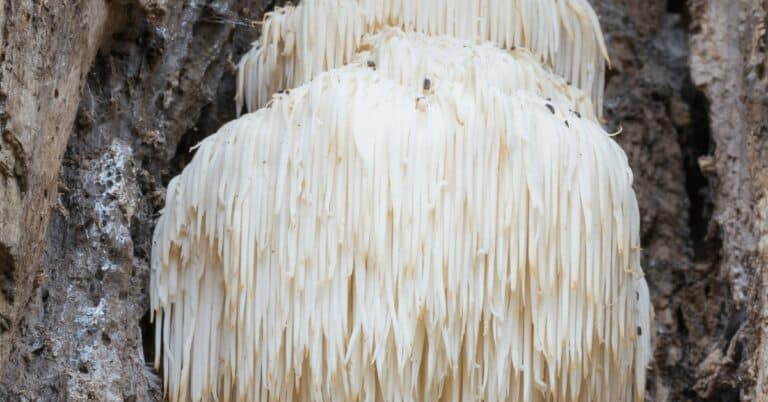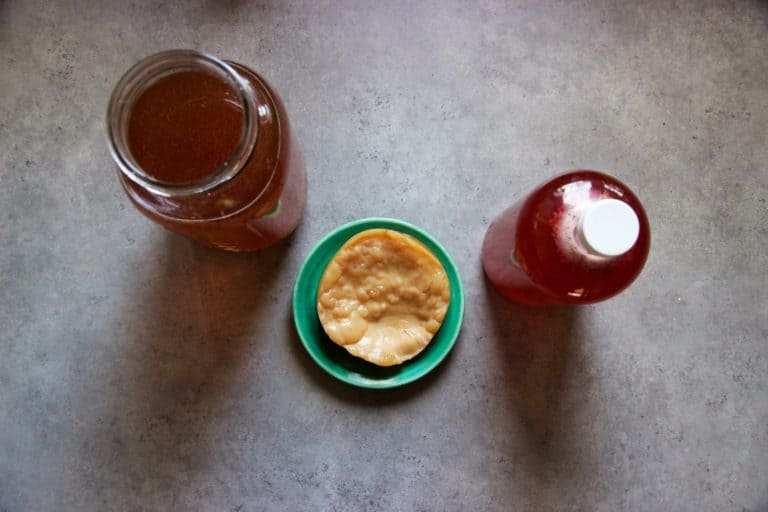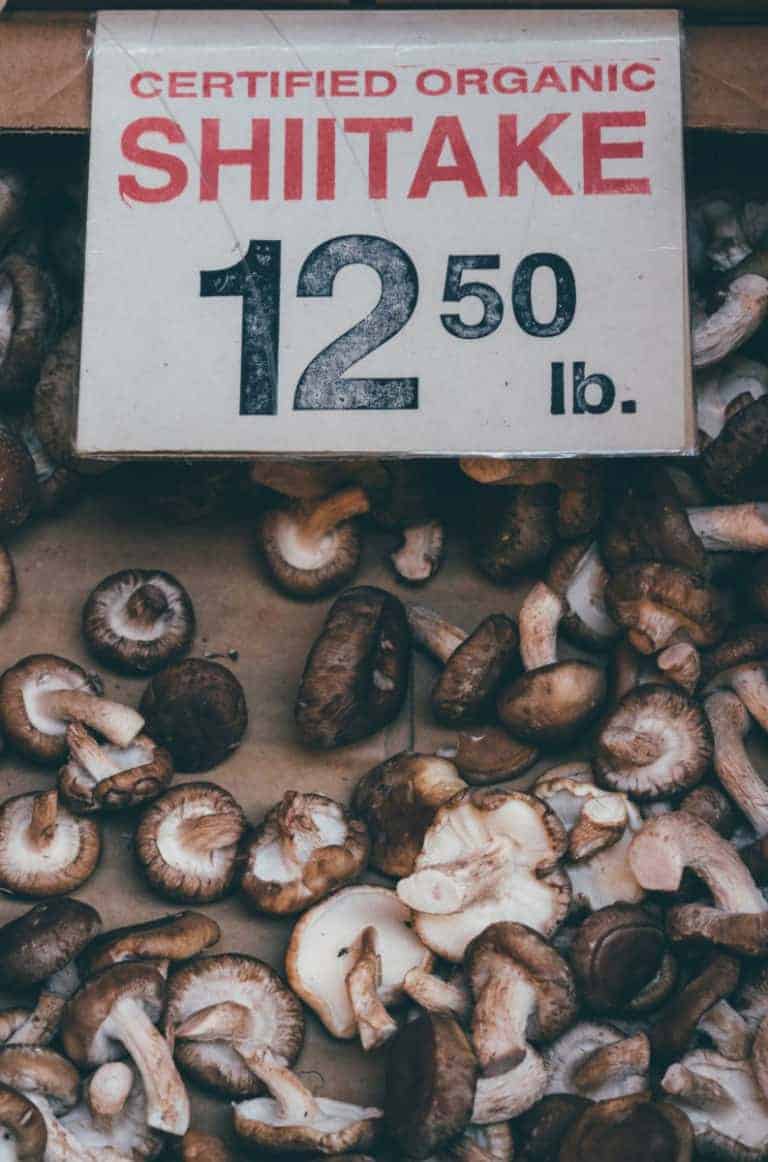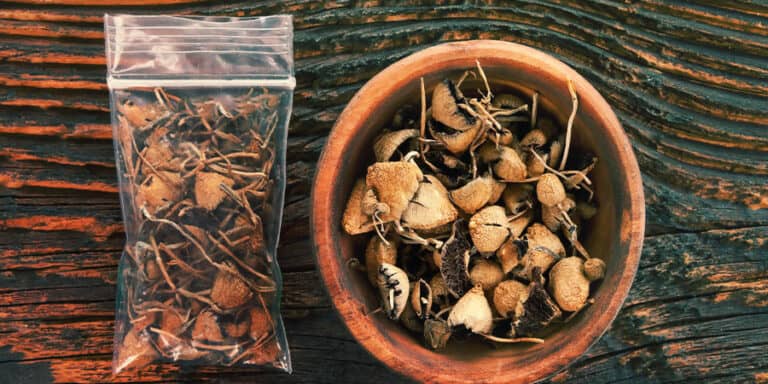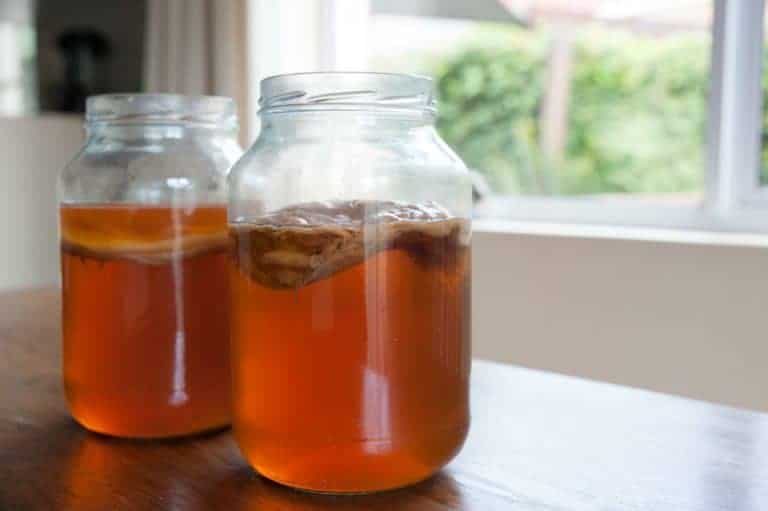Using Fungi to Repair the Earth: Mycoremediation and its Applications

Although their impact is largely hidden from us, fungi are crucial to human welfare and, more broadly, the broader biosphere. Fungal mycelia weave dense, intelligent networks across virtually every landscape on Earth. The fruits of these mycelia are what we normally see above ground, the mushroom. The tenacious filaments underground hold the soil together and process nutrients by recycling dead plant matter. They even communicate with plants and trees to transfer nutrients and other minerals. Without them, we’d be covered in dead organic matter and all major ecosystems as we know it wouldn’t exist.
As nutrient cyclers, saprophytic fungi use extracellular enzymes and organic acids to decompose major plant components, notably lignin and cellulose. This same concept can be extended to pollutants and contamination in surface water and the soil. Both surface water and soil remediation are based on different properties of mycelium. Soil remediation relies on the natural ability of white rot fungi to break down pollutants externally by releasing extracellular enzymes. In water filtration and water contamination reduction, we rely on the interconnected web that mycelium forms which allows water to pass but not larger contaminants.
In this article, we will be exploring the major types of remediation efforts utilizing fungi. We will outline the major research concerning mycoremediation, including its role in habitat restoration of environmental contaminants such as oil spills, heavy metals, pesticides, and fecal coliform bacteria in wastewater. We will also discuss how you can get involved in the grassroots mycoremediation movement for local earth repair, and suggest some resources to learn more about this exciting new mycological application.
What is Mycoremediation?
Mycoremediation is an emerging multidisciplinary science at the interface of environmental chemistry, engineering, mycology, and environmental restoration. Mycoremediation is a term coined by Paul Stamets in 2005 that refers to the technique of using fungi mycelia to remove toxic biological and chemical pollutants from the environment and transform them into harmless, environmental-friendly products. While mycoremediation is a new science, the studies that exist have shown mycoremediation to be highly effective, cost-efficient, sustainable, and low-maintenance compared to other bioremediation methods.
Mushrooms for Cleaning Up Oil Spills: Mycoremediation of Hydrocarbons
Between 1964-1992, Chevron (then Texaco) illegally dumped billions of gallons of oil waste into the Amazon rainforest in Ecuador. They were ordered to pay $9.5 billion (which they still haven’t chalked up), in restitution, but even to this day this contamination has wreaked havoc on a portion of the biodiverse ecosystem of the Amazon. This, and many others such as the BP oil spill of 2010 continue to pose a threat to major ecosystems on land and at sea.
Oil contains a wide range of toxic substances, including many carcinogenic ones. Oil spills are a major threat to the ecosphere, and they are always a question of “when” rather than “if”. Large scale application of mushroom mycelia may be a solution to this problem in the coming future.
Fungi to the Rescue
In the context of oil bioremediation, special attention has been paid to a particular subset of mushrooms known as white rot fungi. White rot fungi are wood decomposers that degrade lignin, a complex plant polymer, and leave behind bleached white cellulose byproducts. It turns out the enzymes it uses to break down this plant polymer can also be used to break down complex aromatic hydrocarbons, the major constituents of oil. These are complex organic compounds with highly stable polycyclic aromatic rings, and so they don’t readily break down.
How does it work?
When oil is treated, the mycelium from these fungal species absorb the oil and produce peroxidases and laccase. These enzymes break hydrogen-carbon bonds, including the bonds that form hydrocarbons in oil. These hydrocarbons are reformed into harmless carbohydrates. In general, the mycelia preferentially break down lower molecular weight hydrocarbons. However, they will break down the higher weight hydrocarbons into more unstable lower weight hydrocarbons. Then, a staged reduction can take place with additional mycelial treatments to completely reduce the constituents of the oil.
The Promising Mushroom Species for Mycoremediation of Oil Spills
The specific species involved in this process depends on the native species in the region where the contaminants are located. If local mushroom species are found in the bioregion, amplifying these species is the most effective. Otherwise, non-native mushroom spawn has to be introduced.
Some hydrocarbon-reducing fungal species include Phanerochaete chrysosporium, Agaricus bisporus (the common button mushroom), Glomus caledonium, Aspergillus fumigatus, Trametes versicolor (known as Turkey Tail), and Xenophiala xenobiotica, among others.
However, several studies have demonstrated that one of the most effective hydrocarbon bioremediating species is Pleurotus ostreatus, or the common oyster mushroom. This mushroom is especially attractive for murine spills because it has been found to be resilient to salt-water when colonized in straw. On straw substrate, it can also float above the water and therefore may be a promising option in reducing oil contamination in oceans and rivers. The oyster mushroom produces extensive amounts of biomass and is easily sourced from farms across the globe.
Mycoremediation of oil spills is an infant science, but many studies have shown promising results
One mycoremediation study of P. ostreatus came from Paul Stamets, which he describes in his book Mycelium Running. In this study, he and some scientists mixed P. ostreatus straw spawn with diesel-contaminated soil in large mounds covered with cloth. Two other “control” mounds were mixed with nitrogen fertilizer and left uncovered or mixed with bacteria and nitrogen fertilizer and covered with a tarp. Over sixteen weeks, the mycelial mound reduced its oily smell and, ultimately, total aromatic hydrocarbons in the diesel reduced from 10,000 ppm to < 200 ppm. The other two mounds were still oily, lifeless sludges, while the mycelial mound eventually grew plants and other secondary fungi and became their own functioning tiny ecological community. Eventually, this remediated soil was used as landscaping soil along highways.
In one study from 1999, compared to controls, P. ostreatus strains lowered the levels of anthracene, pyrene, and phenanthrene (three hydrocarbons) by 81-87%, 84-93%, and 41-64% respectively within two months. A more recent study from 2013 used P. ostreatus to mycoremediate hydrocarbon-contaminated substrates. The researchers found that petroleum hydrocarbons were reduced 85-90% by P. ostreatus within four weeks of incubation compared to controls, which had no effect.
The effects also extend to the aged waste spawn of P. ostreatus, a common byproduct of oyster mushroom cultivation that is commonly discarded. One study by Eggen and colleagues found an 87-99% degradation of polyaromatic hydrocarbons in 12 weeks, while another study found an 80-92% PAH reduction over eight weeks.
It’s not fully known which variables influence the success of mycoremediation. Researchers have found that pH, temperature, biomass, and initial metal ion concentrations and contact time may play a role in the potential for biosorption. To keep temperatures warmer, Stamets et. al. found that mixing the mycelium with compost in 50:50 volume degrades hydrocarbons much faster than mycelium or compost alone. Large-scale applications will likely utilize mycelia/compost mixes.
Mycoremediation of Heavy Metals
Heavy metal contamination is an unfortunately common occurrence because heavy metals are found in the waste products of many industrial industries, including the electronics and textiles industries. Heavy metals are non-biodegradable and tend to accumulate and magnify in the food chain. Not only do they damage microbial soil communities, but they are also toxic in humans and animals by hindering various cellular processes, even in trace amounts.
Existing methods for heavy metal removal have several limitations. These methods include reverse osmosis, chemical precipitation, ion exchange, adsorption, and electrodialysis. Many of these are time-consuming since the metal precipitate slowly. Others create environmentally-unfriendly toxic sludge. Most of them are costly and incompletely remove the metals.
Many Fungi are well-suited to absorb heavy metals
Fungal biomass binds metals with high affinity and can do this in a variety of pH and temperature conditions and either alive or dead. This makes mycoremediation more robust and efficient than other heavy metal bioremediation options.
Fungi have tough cell walls made of chitin that are resilient to high concentrations of heavy metals. The cell wall and the bioactive constituents within them offer excellent metal-binding properties due to the presence of several metal-binding ligands such as polysaccharides and glycoproteins. This allows them to accumulate above permissible levels of heavy metals, which poses an advantage over other bioremediation techniques.
Mushroom species for heavy metal contamination
One of the most popular species for heavy metal remediation is (you guessed it) the widely popular oyster mushrooms of the genus Pleurotus. Their low cost and high yield make them attractive options for reducing heavy metal contamination. They also have high biosorption potential (its ability to accumulate and concentrate heavy metals) due to their high mycelial production.
It concentrates high amounts of heavy metals, including mercury, cadmium, nickel, copper, iron, zinc, and manganese, in its fruiting body.
Other Pleurotus species like P. sajor-caju and P. flabellatus has been found to uptake more Cadmium than P. ostreatus. The exact species used depends on factors such as the ecological climate, the pH of the soil, the type of metal, and the substrate used. Special care must be made to separate these bioremediation mushrooms from edible ones, as the accumulated heavy metals could transfer into the food chain if ingested by any organisms. Some of these mushrooms have been found in some studies to accumulate more than 1500 times the background level of metals in the area.
Some research has shown Ploreutus species to be effective at accumulating heavy metals
P. ostreatus has been shown to bioaccumulate mercury on artificial compost. Bioaccumulation studies have also been performed on Pleurotus species cultivated on metal-enriched substrates. For example, P. sajor-caju grew on a metal-enriched substrate of duckweed. Researchers found that this mushroom accumulated Cadmium above permissible limits. P. pulmonarius reduced the levels of Copper, Manganese, and Nickel in cement-contaminated soil. This species also considerably decreased the content of lead in battery-polluted soils.
Mycoremediation for Water Contamination
in this mycoremediation technique, wood products (sawdust, wood chips, etc.) are transformed into a highly dynamic web of mycelia filaments. This living web can strain, adsorb, and digest bacteria as a food source with its enzymes and unique physical structure. This is all done with a small ecological footprint and relatively cheaply. Since this web is living, care must be taken to select the right species and filter the water at the right stage of mycelial growth. If the mycelial brick is too dense, water can’t pass through it, but if it is too porous, the contaminants can move through it with the water.
If appropriately scaled up, mycofiltration would be a paradigm shift in the water filtration sector. By a recent account from the International Stormwater BMP Database, the best management practices for decreasing levels of coliform bacteria are largely unable to reach the water quality improvement standards. Additionally, these existing practices are also costly and require lots of maintenance that may not make them suitable for dense urban areas or remote water treatment systems.
Pleurotus and Stropharia sp. show great promise as mycelial filters of contaminated water
Several genera of mushrooms have been investigated to reduce contamination in water contaminated with animal wastes and other pathological bacteria. This includes species from Stropharia and Pleurotus. These varieties have been shown to be resilient, low-cost, low-maintenance, and permeable enough to act as an effective mycofilter. Like other mycoremediation techniques, this technique can repurpose the waste spawn of these mushrooms from small farms and reuse it to filter storm runoff and other pathologically-infected waters. Future mycological farms may be strategically placed near vulnerable stormwater sites and contaminated zones for a quicker response to these hazards.
In a mycofiltration study from 2016, King Stropharia mycelium inoculated in straw wattles was used to reduce E. coli contamination in lab environments and wetland tributaries. The lab studies found that E.coli reduced with longer contact times (over an hour) to nearly zero levels relative to controls. Blue Oyster mycelia were also investigated and found to not be nearly as effective as King Stropharia.
In another study, the common oyster mushroom was used to filter an E. coli solution in open-ended glass tubes containing saw dust with mycelia (treatment) and just sawdust (control). A significant reduction was seen in the P. ostreatus mycelia group that was not seen in the control group.
In an exciting phase 1 trial from Paul Stamets and colleagues, mycofilters from Stropharia sp. showed a significant ability to remove freely suspended E. coli from freely flowing water. Higher reductions were found in sediment-bound pathogens, and could possibly achieve 100% E. coli removal. Further research is currently being done to scale up these mycofilters in order to satisfy large-scale design and operating procedures.
Paul Stamets has made this technology public domain, filed under the patent of Mycofilter and Mycorestoration. All of the concepts, methods, and applications will be made publically available. And of course, the team sells plenty of mycelium on www.fungi.com for anyone that wants to take on a local project to filter contaminated water themselves.
Mycoremediation of Pesticides
Pesticides were developed to kill undesired insects, pathogens and plants in the agricultural industry. All too often, these toxic compounds accumulate in the environment and pose a significant health risk to plants, animals, and humans. These long-lasting chemicals are well-known to be mutagenic and carcinogenic.
Current methods to reduce pesticides are of limited use
Several techniques have been developed to reduce these pesticides to more simple, ecologically safe compounds. There are significant downsides to many of the current remediation methods that exist (such as photocatalysis, incineration, or physical treatment), including toxic emissions, hazardous ash formation, and high expenses.
Other bioremediation methods utilize bacteria. Bacteria take a long time before they start to degrade any pollutants, need to be pre-exposed to the toxin, and they are generally not as tolerant as fungi to high concentrations of pesticides.
Using white-rot fungi to reduce pesticides
Using fungi mycelial is safe, feasible, and more economical than these other methods. Similar in principle to other mycoremediation techniques, the white-rot fungi show the most promise in degrading pesticides because of their lingnin-degrading enzymes. They enzymatically attack the pesticides, insecticides, and herbicides and degrade them to less harmful byproducts. They have the advantage of being able to degrade low concentrations of these pollutants to near non-detectible levels.
Many species can degrade insecticides, herbicides, and fungicides, including Phanerochaete chrysosporium, Phlebia aurea, Aspergillus niger, Phoma glomerata, Chrysosporium pannorum, Morteriella sp.., and others. These white-rot fungi have been found to be effective in degrading several chemical compounds, including enilconazole, atrazine, heptachlor, endosulfan, and DDT.
Lindane is an insecticide that is banned in over 50 countries but is long-lived in the environment in which it used. It is known to be a hazardous neurotoxin. P. chrysosporium can remanufacture this toxic compound in liquid culture at 25C to harmless polar metabolites and C02. (Mougin et al 1996). Lindane is also degraded by P. ostreatus in liquid culture (Rigas et al 2005). In one study, oyster mushrooms were able to decrease concentrations from 345 to 30 mg/l within 45 days.
How does it happen?
The degradation is thought to occur through several mechanisms, including oxidation (adding oxygen to the compounds) , decarboxylation (removing a carboxyl group and releasing C02), and enzymatically by enzyme hydrolysis (releasing water in the process). Like in hydrocarbon degradation, pesticide degradation requires the use of laccase and manganese peroxidase, two enzymes secreted extracellularly by white-rot fungi. The efficiency of these reactions depends on several variables, including pH, soil type, temperature, biomass, moisture, aeration, and organic matter present.
Perhaps the most effective pesticide degradation involves a bacterial-fungal synergism. The fungal hyphae can transport the bacteria, release nutrients, and co-metabolize with the bacteria. This consortium is also full-spectrum: bacteria degrade the pesticides most efficiently in water-saturated environments while fungi degrade best in soil. Further studies will have to be conducted to see how well these fungal-bacterial teams degrade common pesticides in larger-scale settings.
Overall, mycoremediation is a cost-effective and eco-friendly approach that effectively degrades many popular pesticides. Mycoremediation of pesticides may be our best solution yet for reducing pollution from these overused chemicals for the betterment of human welfare and major ecosystems.
A mushroom that eats plastic? Yes, it really does exist.
Exponential increases in the production and consumption of plastics have led to tremendous ecological and economic issues. While there is no evidence of this slowing down (280 million kilograms per year and counting), there are some promising bioremediation species that are showing great potential for reducing the amount of plastic around the world, and even feeding us in the process!

Discovers in the rainforests of Ecuador, Pestalotiopsis microspora is a fungus that breaks down and digests a type of plastic called polyurethane. In fact, the fungus only requires polyurethane to thrive, it can survive on just that one carbon source, effectively turning it into harmless organic matter.
This fact makes it a great candidate for mycoremediation of large quantities of plastic. It also can do this in conditions without oxygen and in solid and liquid suspensions, which makes it a highly versatile bioremediation species with potentially broad applicability. An enzyme called serine hydrolase is responsible for the degradation of polyurethane. This enzyme is secreted extracellularly, where it can diffuse into the broader environment. Further research will have to discern whether other plastic polymers could be reduced by species in the Pestalotiopsis genus.
Two birds, One Fungus: Edible plastic-degrading mushrooms

It turns out this isn’t the only mushroom that can eat plastic. In a study by Katharina Unger of Utrecht University, the project addressed two major issues: the increase in world demand for a sustainable food source and the huge flows of plastic waste that are produced around the globe.
The researchers named their project Fungi Mutarium, a novel fungi food product that converts plastic waste into food. It is a hemispheric glass dome with egg-shaped cups of agar. The cups are filled with plastic and inoculated with a variety of fungi including the common oyster mushroom. There is no plastic in the finished product, and according to the head researcher, the final mushroom tastes sweet with the smell of licorice.
In the coming years, this food product may become a popular household item, a “zero plastic emission” edible fungal grow dome. Cumulatively, this may reduce our plastic emission considerably while doing great things for our health.
Starting Small: Mycoremediation and Citizen Science
While everyday citizens can’t just walk up to a large oil spill or other ecological crisis to begin spreading mycelia, there are plenty of smaller community-based mycoremediation projects that are available for those interested in getting involved and learning more about mycoremediation.
Community-based Mycoremediation
Levon Durr runs the mycoremediation center FunGaia Farm in Northern California. He used the common oyster mushroom P. ostreatus to bioremediate a diesel fuel and motor oil spill behind a community center on Karuk tribal land near the Klamath River. The contaminated soil was layered with straw and burlap covered in the oyster mycelium. After some time, samples were taken that showed levels of oil reduced to non-toxic levels or were completely eradicated.
Community-level mycoremediation projects are occurring around the world just like this one. Grassroots mycoremediators may install mushroom beds to deal with contaminated soil, decrease erosion, and to help repair damaged land. Mushrooms can be included in your greywater system. Mycelliated straw (such as from Oyster mushrooms) can be used to absorb small amounts of spilled oil. Mycobales can be made from straw bales inoculated with mushroom spawn and placed in the path of polluted runoff or a contaminated stream. Burlap sacks can also be filled with coffee grounds, cardboard, straw, and mushroom spawn to filter contaminated water. Paul Stamets used a design like this he called a Mycoboom, a burlap sack with oyster mycelia and compost that floats in water contaminated with oil. It can reduce complex hydrocarbons in oil to simpler, unstable forms in a matter of weeks while also effectively containing the oil spill. The EPA even contacted him about these after the BP Oil Spill in 2010.

Tips to Get Started for Mycoremediation at Home
- Connect with local mycologists and individuals interest in mycoremediation. Meetups such as this one in Melbourne, this one in New York, and this one in Central Texas bring like-minded individuals together to discuss mycoremediation and even offer workshops where you can obtain grow spawn.
- Start cultivating for mycoremediation experiments! Spawn, cultures, tools, and grow kits can be purchased easily online from resources such as Amazon for mycoremediation projects. Tons of online resources like this video give step-by-step instructions for making lots of mycelium on your own. Local mushroom farms also have an abundance of spent mushroom blocks that they can give you for your mycoremediation projects.
- Once you’ve obtained grow spawn, get familiar with mycelia. There are a lot of different conditions and variables that factor in when growing mycelia. See how long it lasts on different substrates. Try introducing contaminants and see what happens. For instance, you could mix the spawn of oyster mushrooms with oily rags from car shops or bike shops and see how it reacts as its only food source. Other contaminants you could try include cigarette butts, styrofoam, and diapers. If you want to start smaller, you can use a petri dish of mycelia and add a few drops of 1% diesel to observe what happens, then scale it up when you feel comfortable.
- Fund independent mycoremediation projects. Websites like Experiment.com let you directly fund the research of graduate students and postdocs working on mycoremediation projects. One such project from a few years ago was called “Can brown rot and white rot fungi work together to clean up spilled diesel?” and received $4,620. Be on the lookout for live projects like this one.
- Learn all you can! Mycelium Running is a classic book by Paul Stamets who really kicked off the growing interest in mycoremediation. His Ted Talk SIx ways mushrooms can save the world has been viewed millions of times and gives a great overview of the different ways mushrooms can repair the Earth. Online communities also exist such as Reddit’s Mycoremediation Subreddit which gives up to date information and lets you connect with people interested in mycoremediation all around the world. Tons of forums like Permies offers loads of information and resources for homemade mycorestoration and filtration projects. While mycoremediation is a new science, more studies are increasingly being published which may inspire at-home projects. Many are also accessible to the public. Lots of research coming out of UAB in Barcelona and Aalto University in Finland are showing great mycoremediation work, for example.
Final Thoughts
Mycoremediation is only just beginning to gain traction as a viable science to handle large scale contamination of all kinds, but nature has been using mycoremediation for millions of years. We are increasingly learning that fungi, specifically the white-rot fungi of Ascomycetes and Basidiomycetes, are versatile species capable of reducing oil hydrocarbons, heavy metal levels, pesticides, water contamination, and even biochemical warfare agents like sarin and nerve gas. Over 30% of mycoremediation literature hones in on these white-rot fungi due to the impressive enzymes they secrete that even complex, highly-stable compounds can’t resist degradation from. Not only is this more cost-effective than traditional approaches, but it is also ecologically sustainable, ecologically regenerative, and highly effective, sometimes over 95% effective.
To sum up, Paul Stamets has a great call to action for a mycological paradigm shift at every level of society. He says,
“On a grand scale, I envision that we, as a people, develop a common myco-ecology of consciousness and address these common goals through the use of mycelium. To do so means we need to spread awareness and information. Please spread the word of mycelium. Educate friends, family, and policymakers about mycological solutions. Bring your local leaders up the learning curve on how fungi can decompose toxic substances, rebuild soils and strengthen our food chains. What we lack is the widespread availability of mycologically skilled technicians and educators and a more mycologically informed public. We need a paradigm shift, a multi-generational educational infrastructure, bringing fungal solutions to the forefront of viable options to mitigate disasters. An unfortunate circumstance we face is that the field of mycology is poorly funded in a time of intense need.”

